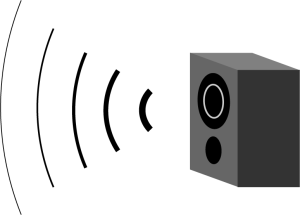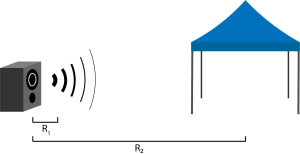Calculating noise levels
James and Mia need to work together to make sure that the music from the stage isn’t too loud in the first aid tent. See how Mia uses the inverse square law to calculate the volume at different distances from the stage…


The on-site GP at the Salty Creek Community Festival, James, is concerned that the music from the stage will be disruptive to the patients and volunteers in the first aid tent. He asks the engineering and safety advisor, Mia, to help him figure out whether it will be quiet enough if they place the tent 75 metres from the stage.
Mia explains that the inverse square law can help them calculate how loud it will be in the tent. When applied to sound, the law states that as distance doubles, the sound level decreases by approximately 6 decibels (dB).
Use the inverse square law to estimate how loud the music will be inside the first aid tent.
The volume of people having a conversation is about 60 dB, so Mia and James decide that they should calculate the noise level more precisely. If it’s any louder than 60dB inside the tent, it will be difficult to hear people speak. Mia explains that they’ll need to use the following formula:
[latex]SPL_2 = SPL_1 - 20\times log (\frac{R_1 }{R_2})[/latex]
where R is the distance in metres from the source of the sound and SPL is the sound level in dB at that distance.

Sound level fill in the blanks transcript
It seems like the music will be a bit too loud if the first aid tent is 75 metres away. James doesn’t want it to be any louder than a normal conversation inside the tent, so no more than 60 dB.

Minimum distance fill in the blanks transcript
With these calculations, Mia can now set up the first aid tent at a distance from the stage where James will be close to the action, but still able to easily communicate with anyone who stops by for help. Logarithmic equations like this one, and the inverse square law, are useful for solving many kinds of science and engineering problems you might come across in your studies or career.
Learn more on Learning Lab
- Watch a short video (6 minutes), and then grab your pencil and notepad for some logarithms practice. (18 minutes)
- The inverse square law is used for more than just calculating sound levels. Learn more on the Inverse Square Law page. (15 minutes)

